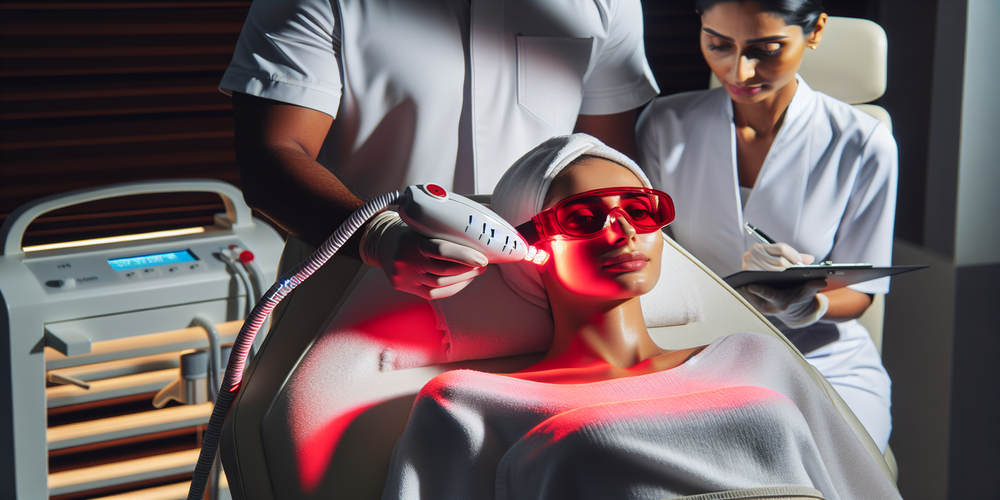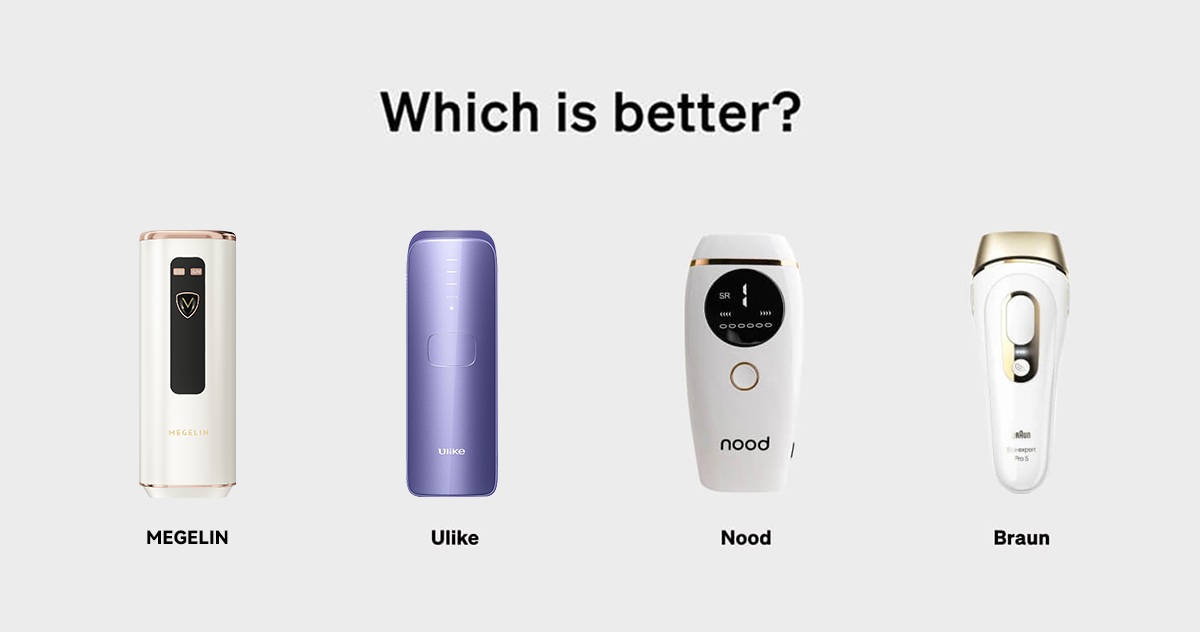
Red Light Therapy for Melasma: A Safe and Effective Solution?
2MegelinMelasma, a common yet complex skin condition characterized by dark, discolored patches, often poses a significant challenge for both patients and skincare professionals. In pursuit of effective treatments, red light therapy for melasma has emerged as a promising solution, offering hope for skin rejuvenation without the harsh side effects associated with some traditional approaches. This innovative treatment leverages specific light intensities to enhance ATP production in the skin cells, aiming to reduce pigmentation and improve overall skin appearance. As individuals seek safer, non-invasive treatments, understanding the role of red light therapy in managing melasma becomes increasingly important.
The article delves into the fundamentals of melasma and its causes, shedding light on why this condition affects so many. It then provides an in-depth exploration of red light therapy, including how it works, its application using LED devices, and the science behind its effectiveness for skin conditions like melasma. Additionally, it addresses concerns such as "can red light therapy make melasma worse" and provides insights into "red light therapy melasma before and after" scenarios. Safety, efficacy, and the potential of red light therapy as a non-invasive treatment option are thoroughly examined, offering readers a comprehensive understanding of its benefits and limitations in the context of melasma treatment.
Understanding Melasma and Its Causes
What is Melasma?
Melasma is characterized by brown to gray-brown patches predominantly appearing on the face, such as the cheeks, chin, forehead, nose bridge, and above the upper lip. It affects more women than men and is particularly common during pregnancy, often referred to as the "mask of pregnancy" [1][2].
Factors Leading to Melasma
Several etiological factors contribute to the development of melasma. Genetic predisposition plays a significant role, with about 50% of individuals reporting a positive family history [1]. Exposure to ultraviolet (UV) radiation significantly exacerbates melasma by stimulating melanocytes to produce excess melanin [1]. Hormonal influences, particularly during pregnancy and with the use of oral contraceptives or hormone therapies, are also critical in triggering melasma [1][2]. Other contributing factors include the use of cosmetics, phototoxic drugs, and antiseizure medications [1][2]. Additionally, individuals with light-brown skin types from regions with high sun exposure are more prone to developing melasma [1].
What is Red Light Therapy?
Red Light Therapy (RLT) is a natural, non-invasive healing modality that utilizes specific wavelengths of light to promote beneficial processes in the body. This therapy involves the use of LED devices to deliver red and near-infrared light directly to the skin, which is both painless and safe [3]. The therapeutic wavelengths range from visible to invisible, allowing for deep penetration into the skin and energizing the mitochondria, the "power plant" of cells [3].
How Red Light Therapy Works
The effectiveness of RLT centers on its ability to stimulate the mitochondria within cells. By enhancing mitochondrial function, cells gain more energy, which aids in various cellular processes such as skin rejuvenation and repair [4]. RLT is known to stimulate collagen production, increase fibroblast production, boost new cell growth, and reduce inflammation, contributing to improved skin health and appearance [4][5].
Different Wavelengths Used
A variety of wavelengths are employed in RLT, each serving a specific therapeutic purpose. Wavelengths such as 630nm, 660nm, 810nm, 830nm, 850nm, and 1060nm are commonly used in treatments to target different skin issues [3]. These wavelengths help in reducing melanin, treating hyperpigmentation, and managing conditions like melasma with minimal risk of thermal damage [6]. It is crucial to select appropriate intensities and wavelengths to avoid adverse effects like overheating or increased pigmentation, particularly in sensitive skin types [6].
How Red Light Therapy Helps Treat Melasma
Red Light Therapy (RLT) offers a multifaceted approach to treating melasma, primarily through mechanisms that promote healing and rejuvenation at the cellular level.
Cellular Level Healing
RLT enhances mitochondrial function in skin cells, which is critical for energy production and overall cellular health. By boosting ATP production, RLT facilitates the repair and rejuvenation of damaged skin cells, which can significantly reduce the appearance of melasma.
Reducing Inflammation and Improving Circulation
The therapy also has anti-inflammatory properties, which help soothe the skin and reduce redness and irritation associated with melasma. Improved circulation, another benefit of RLT, ensures that skin cells receive more oxygen and nutrients, further aiding in the healing process and the reduction of pigmentation.
Increasing Collagen Production
Furthermore, RLT stimulates collagen production, essential for maintaining skin elasticity and structure. Increased collagen can help diminish the appearance of melasma by improving skin texture and firmness, making the patches less noticeable.
Through these mechanisms, Red Light Therapy not only helps in treating melasma but also enhances overall skin health, making it a viable, non-invasive treatment option for those seeking to mitigate this challenging skin condition.
Safety and Effectiveness of Red Light Therapy for Melasma
Safety Concerns Addressed
Red Light Therapy (RLT) is generally recognized for its safety when proper protocols are followed. Key concerns involve the potential for increasing hyperpigmentation if incorrect wavelengths and intensities are used. It is essential to use RLT devices with controlled light intensities, ideally under 50mW/cm^2, to minimize any risk of skin heating which could lead to adverse effects like increased inflammatory responses [6]. Higher intensities, specifically above 100mW/cm^2, should be avoided as they may cause skin hyperthermia and other side effects [6]. Additionally, while Near-Infrared (NIR) light is often mistakenly thought to exacerbate hyperpigmentation, studies suggest that with correct usage, NIR can actually treat melasma effectively with a very low thermal impact [6].
Effectiveness Based on Studies
The effectiveness of RLT in treating melasma is supported by various studies, although the results can vary based on the specific light parameters used. Specific wavelengths such as 630 nm, 585 nm, and 850 nm have been shown to modulate components of the melanocytic pathway, significantly reducing melanin content when applied with radiant exposures between 1 and 20 J/cm^2 [6]. These findings underscore the importance of selecting the appropriate wavelength and dosage to achieve the desired outcomes in melasma treatment. Moreover, avoiding exposure to triggers like unprotected sunlight and blue light on the same days as RLT treatments can further enhance the effectiveness by preventing any hyperpigmentation response [6].
Conclusion
Ultimately, red light therapy emerges as a compelling and safe option for managing melasma, blending a unique mix of non-invasiveness, efficacy, and minimal side effects. It presents itself as a beacon of hope for those affected by this obstinate skin condition, offering a solution that not only addresses the aesthetic concerns but also nurtures skin health at a cellular level. By reinforcing cell rejuvenation, reducing inflammation, and stimulating collagen production, red light therapy provides a comprehensive approach to mitigate the visible impacts of melasma, paving the way for improved skin texture and overall appearance.
The journey towards understanding and utilizing red light therapy for melasma underscores the importance of integrating innovative treatments with traditional approaches for optimal skin care. Although individual results may vary, and while further research is always beneficial, the existing evidence points towards a bright future for red light therapy in dermatological practice. As we continue to explore and harness the power of this treatment, it stands as a testament to the evolving landscape of skin care, offering individuals a safer, more gentle alternative to engage with, in their quest for clear, healthy skin.
FAQs
Q: Are there any risks associated with red light therapy?
A: Red light therapy (RLT) is generally safe and carries a low risk of side effects. However, if not used according to guidelines, prolonged or high-intensity exposure can harm the skin. Additionally, improper use of home devices might result in burns, blisters, or eye damage if eyes are not protected.
Q: What is the professional opinion of dermatologists on red light therapy?
A: Dermatologists like Dr. Diane Madfes, a board-certified dermatologist and Assistant Professor of Dermatology at Mount Sinai School of Medicine, believe that red light therapy can be beneficial. It is noted to help treat acne, reduce redness, and accelerate the fading of acne marks.
Q: What is the most effective treatment for melasma?
A: Hydroquinone is widely recognized as a leading treatment for melasma. It is a topical agent that works by evening out the skin tone.
Q: Is it possible to completely eliminate melasma permanently?
A: While many cases of melasma gradually fade over time, particularly with adequate protection from sunlight and other light sources, there is currently no guaranteed permanent cure for melasma.
References
[1] - https://www.ncbi.nlm.nih.gov/books/NBK459271/
[2] - https://my.clevelandclinic.org/health/diseases/21454-melasma
[3] - https://platinumtherapylights.com/blogs/news/red-light-therapy-for-melasma
[4] - https://my.clevelandclinic.org/health/articles/22114-red-light-therapy
[5] - https://www.healthline.com/health/red-light-therapy
[6] - https://gembared.com/blogs/musings/melasma-and-pigmentation-from-red-light-therapy









